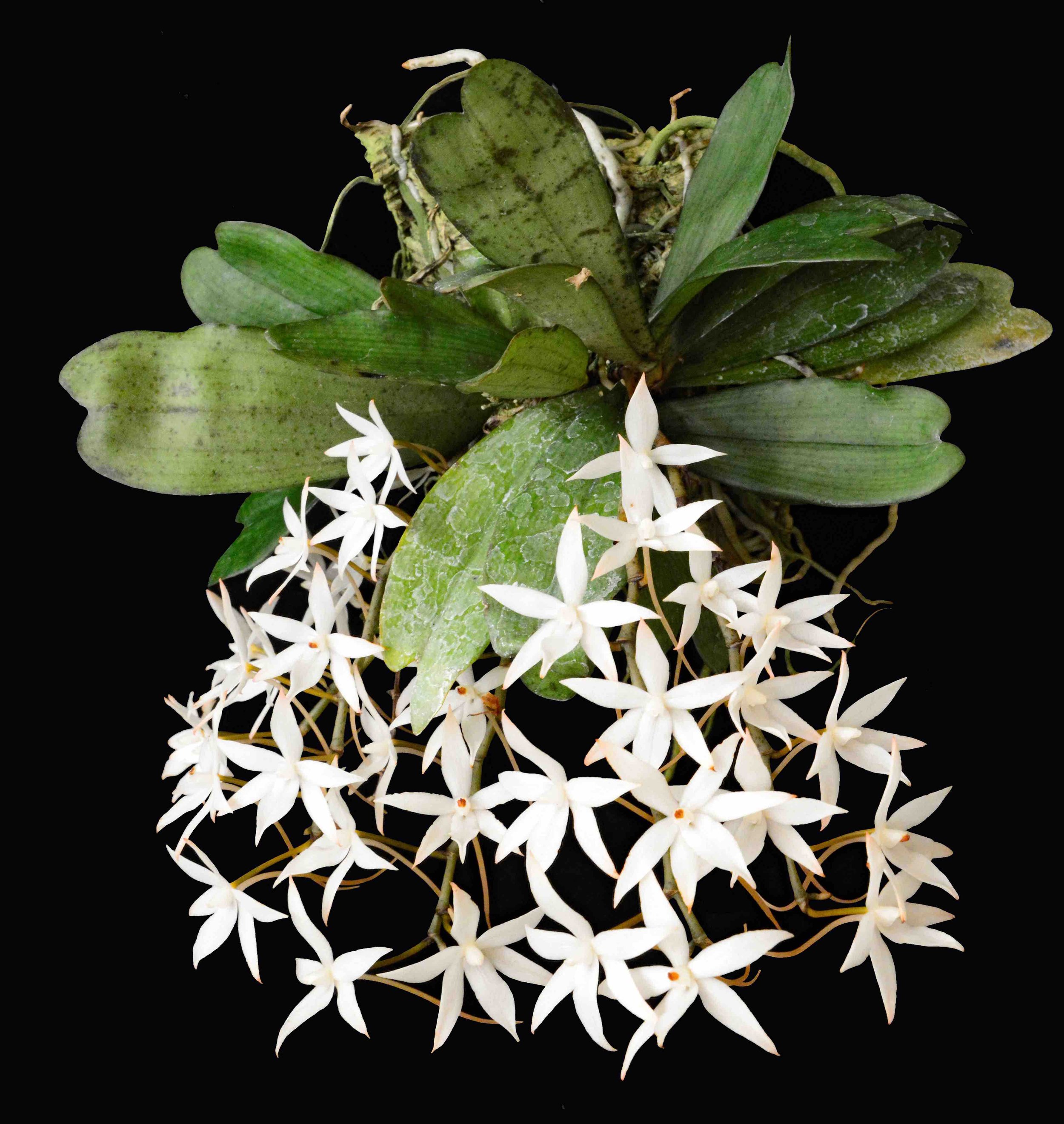Plant of the Month - Aerangis biloba
Aerangis biloba, November 2023 greenhouse-grown Plant of the Month
Photo courtesy of Joan Goodman
An interview with the grower, Jim Ault.
by John Hockberger
What’s the name of the plant?
Jim — Aerangis biloba. I bought it, I believe, five or six years ago from Brookside orchids out in California. I mounted it immediately on a slab of cork. I’m always growing it that way, vertically mounted, tied on with a little bit of sphagnum moss under the roots and fishing line.
It became established within a year or two, then the fishing line came off. It’s been very reluctant to bloom for me until this past year when I upped the amount of water and fertilizer the plant is getting. Especially in the summertime, I realized I was letting my mounts get too dry and so it’s been getting watered once a day, maybe twice a day during the summer heat. Fertilize every time with 100 parts per million nitrogen fertilizer, 15-5-15 Cal-Mag. About a quarter teaspoon per gallon would be the rate on that. It’s responded very nicely as a result with multiple inflorescences. Light fragrance just at dusk, nowhere near as strong as a lot of the other angraecoid orchids have, but it looks good!
If somebody wanted to attempt to grow this in their home, how challenging is that?
Jim — I think number one will be simply finding a source on it. Many of the angraecoids are a challenge to find commercially. A lot of the Angraecum species you simply can’t find in trade. If you can find it (Aerangis), it definitely is better on a mount than in a pot. If you do pot it, pot in a very tight, undersized pot. They do not like root disturbance at all. I’m saying that generically for a lot of Angraecum species. A mount can be a challenge in the house simply because winters can be so dry that you can’t keep the humidity up around the plant. I also grow where it’s never getting any direct sunlight. I have it mounted on a wall in the greenhouse where the plant is on the west wall facing east, and so it gets sunlight that cuts across the greenhouse or overhead where I have larger plants above it, so it’s like a plant under tree outside we’re gonna dapple light on it, but never direct sunlight.
What would be the ideal humidity level?
Jim — Probably 50% and above. Lots of airflow. Fans going 24-7.
Do you modify the amount of light as the year goes by to mimic the outdoor light?
Jim — I don’t do supplemental lighting, but the light quality does change. My greenhouse is oriented north-south. In late afternoon it goes into the shade of an oak tree. The oak tree has now dropped all its foliage within the last week and so I’m actually getting much brighter light into the greenhouse, but it’s also with the sun lower the sky. That’s also a change as well because the sun is lower and it’s angling in through the end of the greenhouse and so I have to be careful of the lighting. I jockey a lot of my plants around. In fact I was rearranging plants this morning the greenhouse. It’s very unscientific, but it’s just kind of a feel that this could be too bright, this isn’t bright enough. And so especially plants like this Aerangis, it’s on mount - I move those around. And also, mounted on the wall, as we really get into the winter cold I’ll take them off the wall. They’re on wire rack. It’s suspended about an inch from the wall, which is polycarbonate, and I’ll move all those those (attaching them) to hanging plants that are actually over the walkway so I end up dodging plants left right as I walk down the walkway.
When you say “watering,” are you spraying it or do you mist it or submerge it?
Jim — I use a hose. I’m blessed with a greenhouse!
Where does this plant come from in the wild?
Jim — Africa

